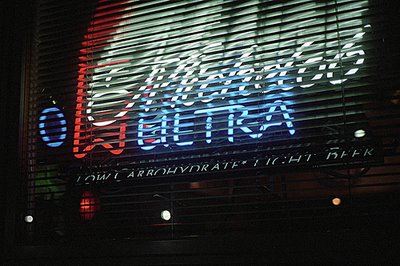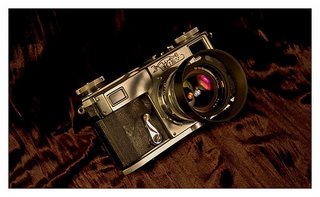This commentary by a fellow photographer, Rich Silfver, reminded me of one of the difficulties of being a photography fanatic in a world of photo neophytes. He rightly points out that photography is generally a solitary hobby, and even when done in the company of others, unless the photographer's companions are also photo enthusiasts, it can be a frustrating endeavor... both for the photographer and his cohorts, who are likely to be bored after a short while.
You see, when a photographer goes out looking for photos, it's a very rare instance that opportunities leap out at him. The vast majority of the time, the photographer spends a great deal of time studying a place or situation, looking for the best way to portray the subject. Or as is often the case with street photography, the situation might be set up perfectly, but the scene isn't complete until the right person is added. So the dedicated photographer waits, camera in hand, aperture and focus preset, until that split second when something happens or someone enters the picture (literally) it all comes together. Often the wait is 15 minutes or longer.
I can fully understand how a non-photographer would not see the excitement involved. Much the same as I understand how certain people don't like baseball. To many, the slow pace of the sport overrides the suspense and strategy that is set up with every pitch and swing of the bat. Instead, most people I know prefer football with its 'wham bam, thank you maam' tempo. If they can't see it, it must not be there.
And that's why I've gotten into the habit of bringing two cameras along whenever I'm with someone and suspect a photo op might occur. I'll have my preferred gear, usually a Leica or Contax, but also a decent P&S setup that is easy for anyone to operate.
I'll hand the P&S camera to my friend and offer a challenge. "You've got 36 frames. Take photos of ANYTHING you want, and we'll compare our photos when we're done." This result is usually that my companion is suddenly engaged in the spirit of the exercise. A very friendly competition can be fun, as long as it is understood that it's just that... for fun. And everyone loves to take photos, especially when they don't have to drop off the film and pay for the results.
It's also important to use film. A digital camera will change the process by giving the person feedback as she progresses. And often the feedback won't be positive to that person. Shooting film leaves something to the imagination and forces the person to slow down, knowing that the shot will be permanent, rather than easily deleted from the memory card. With film, every shot counts.
Once the film has been used up (hopefully both yours and theirs), drop it off at a one-hour photo lab. Go to dinner and let the suspense build up. But pick up the film as soon as possible. That's the reward for your friend's patience and contribution to the event.
Having done this a few times, my friends are often more than happy to go on photo excursions with me. Now, the only part that sucks is that their photos are often better than mine.






